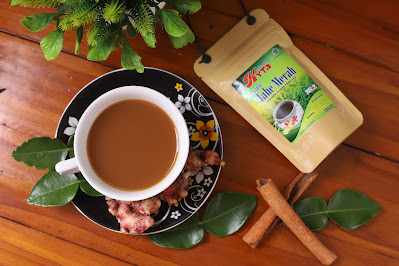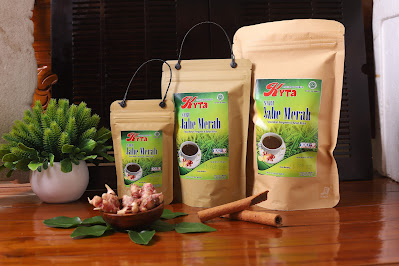The Reason People Use Red Ginger
The later part of the year usually marks the start of the raining season in Indonesia, affecting the routinity of most people. That breezing wind which comes with the rains may reduce one’s stamina, making it easy to catch cold and flu, at least makes you feeling not fit.
Instead of taking chemical-based medicines, people may opt
to consume warming foods and drinks, such as those using ginger in the recipe.
The warming sensation comes from a ketone compound called zingeron which has
that effect to relieve cold and flu symptoms by widening blood vessels and
burning calories into body heat.
People who are exposed to cold temperature are suggested to
drink ginger to return body heat. Other than zingeron, ginger also contains
essential oil which is good to reduce sinus and opening up breathing way.
Ginger is one of Indonesia’s spice export commodities in addition being used as
raw material in traditional medicine which contributes in earning foreign
exchange and absorbing workers.
Ginger is an aromatic perennial herb from the Hot Issue
Zingiberaceae family which has rhizome similar to antlers and paired leaves in
the form of swords. There are three ginger varieties which are most commonly
consumed: elephant or rhino ginger, yellow ginger and red ginger. - Elephant
ginger is the most popular in the global market due to being large and plumy,
and not too hot.
Indonesians might not like elephant ginger too much. The
rhizome is larger and fatter but has less aroma and flavor when compared to
other types of ginger. The rhizome diameter is between 8.47 centimeters and
8.50 centimeter with a height of between 6.20 centimeters and 11.30 centimeters
while the length is between 15.83 centimeters and 32.75 centimeters.
The leaves are green and the stalk is light green. Elephant
ginger has an essential oil content of between 0.82% and 2.8%. - Most
Indonesians prefer yellow ginger, also called emprit or white ginger, more with
its sharp aroma and hotter taste for cooking. The rhizome is flat with whitish
yellow color and soft fiber and an aroma sharper than elephant ginger.
The rhizome’s diameter is between 3.27 centimeters and 4.05
centimeters, a height of between 6.38 centimeters and 11.10 centimeters and a
length of between 6.13 centimeters and 31.70 centimeters. Both the leaves and
stalk are light green. Yellow ginger has an essential oil content of between
1.50% and 3.50%.
Red ginger, sometimes called sunti, is rarely used in
cooking because it is very hot and has a high content of essential oil. Red
ginger is mostly used as raw materials for jamu (herbal medicines) and
pharmaceutical industries. Red ginger has small rhizome with reddish yellow
color and coarse fiber, the taste is very hot and the arome is very sharp.
The rhizome’s diameter is between 4.20 centimeters and 4.26
centimeters, a height of between 5.26 centimeters and 10.40 centimeters and a
length of 12.33 centimeters and 12.60 centimeters. The leaves are light green
while the stalk is reddish green. Red ginger has an essential oil content of
between 2.58% and 3.90%.
Indonesian ginger has the best quality and taste when
compared to ginger from other countries. Ginger is one of spice plants being
traded globally. Ginger is exported in various forms such as fresh, dried,
processed fresh, and essential oil.
There are huge opportunity for ginger cultivation as
domestic jamu companies are requiring ginger as an important ingredient. Jamu
producers have even started to export their products for more opportunities.





Komentar
Posting Komentar